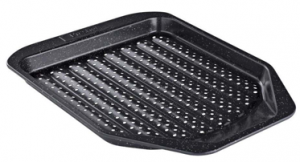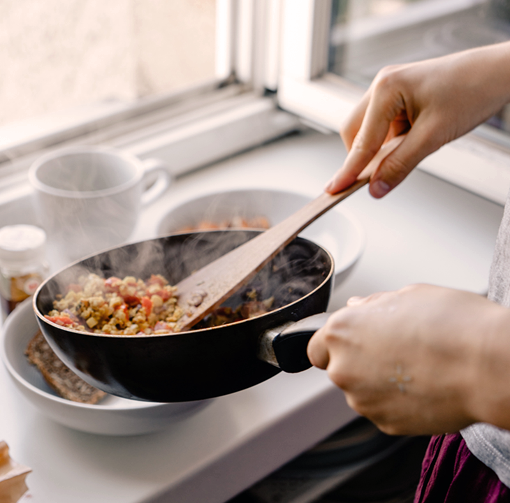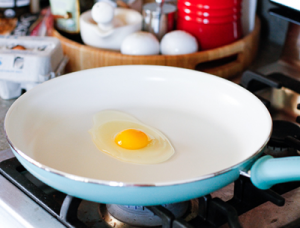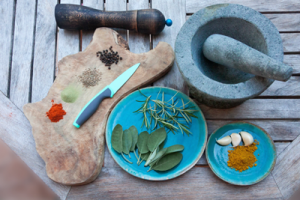Food is fuel – you want it to be top-grade and on hand. Make it happen by being prepared to cook up a variety of tasty and nutrient-dense foods yourself.
Gear
Here’s a checklist of must-have tools for healthy cooking.
- Blender – a high-powered blender will make it easy to make soups, sauces, smoothies and vege juices, plus it will also be able to mix up cake, muffin and pancake mixtures. Make sure you get one with a removable stopper in the lid that you can take out when you blend hot liquids or veges.
- Traditional iron wok – for your high-heat frying or for steaming. Coat the cooking surface with oil after cleaning to prevent rust.
- Cast iron frypan with ridged surface. For high-heat cooking – has the added bonus of adding iron to your food!
- Microwave oven – great for cooking a variety of vegetables in a hurry, just on a dinner plate.
- Steamer – get the type that folds out like a flower, so it can be used in anything from a small saucepan to a wok.
- Mortar & pastle/herb cutting knife & board – to unleash the power of herbs!
- Baking racks – so meat fats can drain and baked items can get crispy
- Pressure cooker – for a very healthy and fast way to cook split peas, beans, lentils, pot roast, soups, stews and more.
- Slow cooker – or an oven casserole dish.
- Ceramic or stoneware non-stick frypan – spend a little more for a better quality product and don’t overheat it, especially when there’s nothing in the pan. If you have old, scratched up Teflon frypans and saucepans, get rid of them.
The last item needs some further explanation. Non-stick cookware received a bad rap because the polytetrafluoroethylene (known as Teflon) coating was thought to be toxic when ingested (bits of the surface can flake off when scratched by metal implements), and when fumes are inhaled after the pan is overheated. This coating contains perfluorooctanoic acid or PFOA, which is a suspected carcinogen. Many manufacturers have phased out the use of PFOAs. Look for PFOA-free pans – cheaper products with ‘ceramic’ and ‘stoneware’ in the title may still have PFOAs on their surface. True ceramic and stoneware cookware can be heated to higher temperatures than Teflon-coated cookware.
For anyone with concerns about cooking food in microwave oven, the World Health Organisation (WHO) has stated that the biggest danger is burning yourself when you take the dish and food out of the oven. According to WHO, food cooked in a microwave oven is as safe, and has the same nutrient value, as food cooked in a conventional oven. Addressing common misconceptions, a WHO statement says:
“It is important to realize that food cooked in a microwave oven does not become ‘radioactive’. Nor does any microwave energy remain in the cavity or the food after the microwave oven is switched off. In this respect, microwaves act just like light; when the light bulb is turned off, no light remains.”
Cook for success
Some small adjustments to your cooking habits and methods can make a big difference with the health, nutrition and quality of your food.
Oils
Limit the oil you use by cooking with a ceramic or stoneware pan, using spray oils or applying oils to the pan (when cold) with a pastry brush. You should not heat oil until it smokes, because by this point the heat is destroying the oil’s beneficial antioxidants and forming harmful compounds. Heat it just until it shimmers. The trick is to use an appropriate oil. For example, avocado and rice bran oil are very healthy oils that have very high smoke points, so use them for high-heat cooking. Rice bran oil is especially good for high-heat frying, but be aware that it is a little higher in saturated fats (27%) compared to avocado (12-16%) and olive oil (15% approx.). Avocado oil has a shelf-full of health benefits, including helping to lower cholesterol, and it has its own distinctive taste. If you want to stick to extra-virgin olive oil, that’s fine – the claims that they can’t handle high heat and lose their health benefits has been shot down by nutritionists.

Cooking for vegetables
First up, raw isn’t always best. Studies have found that cooking actually ‘helps make some nutrients more available, such as lycopene in tomatoes, and antioxidants in carotenoids such as carrots, spinach, sweet potatoes and peppers (capsicum).
Microwaves don’t “destroy” nutrients in fresh veges. Studies have found that veges cooked in microwaves have a significantly higher retention of iron and vitamin C than veges that are boiled, steamed or stir-fried in water or oil). For fast and nutritious ‘roast’ veges (e.g. potatoes, sweet potatoes, pumpkin, onions), cook veges in the microwave (a little undercooked) then put them quickly under the griller or in the oven at high heat. Steaming is also an excellent way to retain nutrients, and it works very well for fish and some meats, too.
Scrub, don’t peel
Scrub the skins of vegetables (and fruits) rather than peeling them, as often the skins are an important source of nutrients. This applies to fruits, too – even bananas. In fact, banana peels are a rich source of potassium and they also contain tryptophan, which increases serotonin levels for better sleep and mood, while the lutein in bananas is a powerful antioxidant that protects the eyes. Chop skins finely and put in smoothies, soups or stews.
Slow it down
Slow is sometimes better. Much of the claimed cancer-causing propensities of red meat relate to it being cooked at very high heat, because meats will naturally produce heterocyclic amines (HCAs – a carcinogen also found in cigarette smoke) when in contact with high heat. As a bonus, the best cuts of meat for slow cooking are often more packed full of flavour, they can even be very low in fat and they have added nutritional value from connective tissue such as collagen. Slow cooking meat is also more foolproof! For beef, look for skirt, chuck or shin (‘gravy’), and shanks for lamb.
Soak it
If you like your grills, BBQs and pan-seared meats, then marinating your meat can cut down the risks to your health and add flavour so you’re less likely to pile on the sauces. Spices and lemon juice or vinegar can reduce the harmful compounds linked to aging and chronic disease that form during cooking. The Cancer Research Center of Hawaii found that a teriyaki marinade reduced HCAs by 67% and turmeric-garlic sauce reduced them by 50%. Use a thin, vinegar-based marinade, going easy on anything with sugar and packing in some chopped or crushed herbs and spices. Always marinate in a non-metal container in the fridge. Marinate prime beef cuts for 15–120 minutes, soak less tender beef cuts for 6 hours. Poultry, cubed meat, stew meat and veal, pork and lamb can be marinated up to 2 days. Pat meat dry after removing from marinade to promote even browning.
Also consider cooking your meat a little less, as well-done meat has 3.5 times more HCA than medium-rare meat.
Tricks & tips
- Use less sauces and processed packet or canned sauce mixes – they’re full of salt and chemicals.
- Use more herbs and spices – these will flavour your food and can form the base for a sauce. Fresh herbs are packed full of vitamins and minerals, and many have medicinal functions as immunity-boosters (e.g. rosemary, chives), anti-inflammatories (chilli, garlic, ginger) and antioxidants (thyme). As a general guide, one teaspoon of dried herbs equals four teaspoons of fresh.
- Cook with wine – it will add flavour, tenderise and moisten meats and fish during cooking (as a replacement for fat), and it can form the base for a sauce. Don’t sweat the alcohol– research from the USDA shows that in food baked or simmered with wine for 15 minutes, 40% of the alcohol will remain; after one hour, only 25% remains; after 2½ hours, just 5%.
- Use different flours – it’s good to get a wider range of nutrients by eating different cereals. Most supermarkets now sell a variety of flours, which you can substitute into recipes on a half-and-half basis (half wheat flour, half others). Good flours for baking and pancakes, etc. are buckwheat (use a lower temperature for pancakes), brown rice flour and banana flour – these are also three flours that will give you a different nutrient profile to your standard wheat flour. For pasta, look out for varieties made with pulses – they don’t taste much different to standard pasta, plus they’re really high (28% for my favourite brand) in protein.
- Prick your sausages and chicken wings then put them in a pot of cold water and bring to the boil. This will remove some of the salts (from the sausages) and fat. It also makes your meat less prone to bacterial issues and it will cook more quickly, which means less carcinogenic black bits.
- Use low-fat yogurt or evaporated milk in place of cream or coconut cream.
- Thicken sauces with cornflour mixed with a little water – bring your sauce to the boil and stir in quickly. This works even for European sauces, e.g. white sauce, cheese sauce – no need for butter or packet sauce mixes. A sprinkling of instant dried mashed potato mix can work, too.
- Don’t add salt to food as it is cooking. Add a splash of olive oil, vinegar or lemon juice close to the end of cooking time – it can enhance flavours in the same way as salt.
- Use a plant sterol-based spread as a butter-substitute for baking or sautéing (e.g. mushrooms, asparagus, fish). Plant sterols are a very proven and effective way to lower both total and LDL (‘bad’) cholesterol. Some brands now come in ‘ultra-light’ versions, which are almost fat-free. When cooking on a stovetop, use a low to moderate heat and watch the pan as the spread burn or separates easily.
Finely chop or crush & grind – unleash your inner psycho killer on herbs and spices. - Funk up your cooking with fruit – foods such as plums, grapes and oranges are great, especially as foods that the high levels of vitamin C in foods such as these help maximise the amount of iron you absorb from your food. Protein-digesting enzymes in papaya (papain) and pineapple (bromelain) are great too – they tenderise meat and make it easier for your body to digest and assimilate protein.
- Cool it with starches. Pasta, potatoes and rice that has been cooked, cooled and then reheated can be healthier than it is freshly cooked. This is because the cooling turns some of the starch (a form of carbohydrate) in them into “resistant starch,” which is still retained even after the food has been reheated. More resistant starch means the food becomes lower on the high glycaemic index, which means the sugars in the food are absorbed slower – this is a good thing for regulating blood glucose and managing your appetite, energy level and rate that you store fat in the body. Just make sure you don’t overcook the pasta or you can undo some of these benefits.
- Pack in the fibre – slip in lots of extra fibre and nutrients by adding chopped leafy vegetables and herbs – they cook down to next to nothing. Another trick is to cut down the carbs and calories by mixing finely chopped broccoli stalks, banana skins, swedes or cauliflower into your rice. You can even make pizza bases with crushed cauliflower mixed in, but damn, I draw the line somewhere – it’s tricky to make the dough hold together and it’s kind of a hate crime against pizza, but see what you think!







